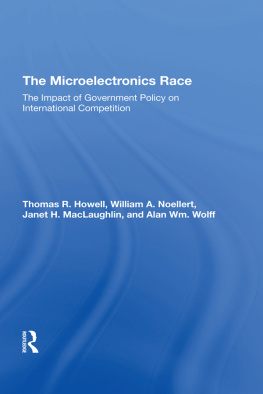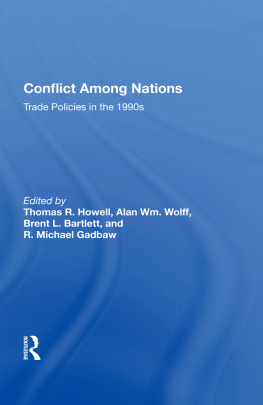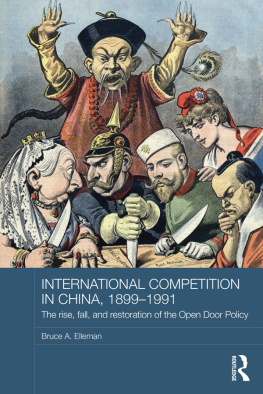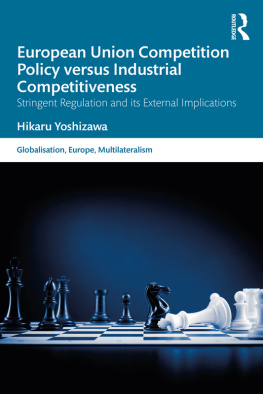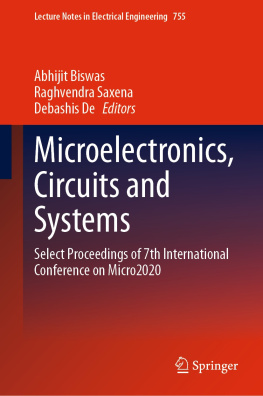The Microelectronics Race
ECONOMIC COMPETITION AMONG NATIONS
Series Editors
Alan Wm. Wolff, R. Michael Gadbaw, Thomas R. Howell, and William A. Noellert
Dewey, Ballantine, Bushby, Palmer & Wood, Washington, D.C.
Paradoxically, in an era of growing economic interdependence, commercial and technological rivalry among nations is intensifying. International competitiveness has moved to the center of the U.S. public policy debate and has become the focus of increasing attention in Europe, Japan, and the developing world. This series examines the public policy issues that affect competition among nations and lead to international economic conflict. Its goals are to contribute to the policy debate by examining underlying sources of economic conflicts, providing policy suggestions for their resolution, and fostering the knowledge that can make a more integrated world economy possible.
FORTHCOMING IN THIS SERIES
Intellectual Property Rights: Global Consensus, Global Conflict, R. Michael Gadbaw and Timothy J. Richards
Steel and the State, Thomas R. Howell, William A. Noellert, and Alan Wm. Wolff
Economic Competition Among Nations Series
First published 1988 by Westview Press
Published 2019 by Routledge
52 Vanderbilt Avenue, New York, NY 10017
2 Park Square, Milton Park, Abingdon, Oxon OX14 4RN
Routledge is an imprint of the Taylor & Francis Group, an informa business
Copyright 1988 Taylor & Francis
All rights reserved. No part of this book may be reprinted or reproduced or utilised in any form or by any electronic, mechanical, or other means, now known or hereafter invented, including photocopying and recording, or in any information storage or retrieval system, without permission in writing from the publishers.
Notice:
Product or corporate names may be trademarks or registered trademarks, and are used only for identification and explanation without intent to infringe.
Library of Congress Cataloging-in-Publication Data
The microelectronics race: the impact of government policy on
international competition/by Thomas R. Howell [et al.]
p. cm.(Economic competition among nations series)
Includes index.
1.Microelectronics industryGovernment policy.2.Competition,
International.3.International economic relations.I.Howell,
Thomas R., 1949- .II. Series: Westview special studies in
science, technology, and public policy /society.
HD9696.A2I588 1988
338.476213817dc19
87-31733
CIP
ISBN 13: 978-0-367-29387-1 (hbk)
This book is dedicated to those individuals in the U.S. Government who have begun to recognize the full implications of the challenge which this country confronts in microelectronics, and who are beginning to take steps to deal with that challenge. In that regard, special recognition and respect is due the late Secretary of Commerce, Malcolm Baldrige.
Contents
, Andrew A. Procassini
Guide
The invention of the transistor at Bell Telephone Laboratories in 1947 signalled the beginning of the worldwide revolution in microelectronics. That revolution is still in progress, and is transforming all facets of life so profoundly that the period which began forty years ago is increasingly referred to as the information age. Information age technology has been made possible by microelectronics capability to detect, measure, record, process and communicate information at real-time speeds or for long-term storage information which may be in the form of audio, video, data, text, graphics or images, and which may be transmitted across distances as short as house to house or as distant as from earth to the moon. A revolution of this magnitude inevitably affects the political, social, economic, and defense interests of all nations.
The United States, with its microelectronics technology leadership and its tremendous economic resources, has championed an open exchange of ideas, trade and people between the nations of the free world. Our political beliefs, coupled with our technological and economic strengths, have led us to aid all friendly nations in the various areas of information technology. Our assistance has ranged from providing know-how to offering our open market, with U.S. consumers and businesses purchasing a substantial proportion of the worlds output of microelectronics-based goods and services.
However, many nations, notably Japan, Korea, and some European countries, have elevated industrial endeavors in microelectronics from the level of actions by individual firms and entrepreneurs to that of governmentally-directed national policy. The microelectronics sector is promoted as a strategic industry, essential to economic growth, the national standard of living, and national security. American firms privately-owned and driven by the profit imperative are increasingly pitted against foreign, governmentally-directed cooperatives of many firms and institutions. This competition has resulted in the progressive erosion of our manufacturing base, and is now jeopardizing our technological leadership.
Since its inception the Semiconductor Industry Association has sponsored a number of studies on the international competitive environment in microelectronics. This most recent book arose from a concern that the disparity between our own government policies toward the microelectronics sector and those of our principal trading partners is leading to the erosion of U.S. leadership in this industry. Because of the importance of this problem, SIA gave its support to the research leading to the publication of this book, which explains what is happening today and urges the United States to reassert its position in the information technologies.
The future of U.S. competitiveness in all industries in international markets depends on the success of realistic federal, industry, and company policies with regard to microelectronics. A cooperative exchange of views, leading to the formulation of effective national policies, is now essential.
Andrew A. Procassini
President
Semiconductor Industry Association
The authors would like to acknowledge the contributions of a number of individuals at Dewey, Ballantine, Bushby, Palmer and Wood to the preparation of this study. Todd Krieg and Cheryl Hesse performed statistical analysis and research. Kathleen Boylan prepared the graphics and oversaw the layout and physical production of the study. Bernice Grandsoult typed the initial drafts of the study and assisted with the preparation of the tables. The library staff, supervised by Daria Proud, tracked down many of the research materials which were needed. Susan Forrester coordinated the conversion of the manuscript to typeset format, which was performed by Pandick Technologies, Inc. in Washington, D.C. The word processing unit at Dewey Ballantine revised many drafts of the study, and we are indebted to Joe James and Martha Myricks, the supervisors, and Joyce Harris, Julie MacGregor, Reginald Spence, Nancy Cemick, Dennis Curtin, Neal Johnson, Reba Lawson, Wini Parker, Gerald Philpott, and Sharon von Bergener for their work on this project.
The United States ability to shape the course of world events has been a standing assumption since the end of the Second World War. At that time both U.S. policymakers and the general public clearly understood that the industrial strength and technological leadership of the United States provided the basis for the successful prosecution of the War. The subsequent ability of the U.S. to drive postwar reconstruction through implementation of the Marshall Plan, the creation of the Bretton Woods institutions, and the extension of regional and bilateral aid was likewise predicated on U.S. industrial and technological superiority.

